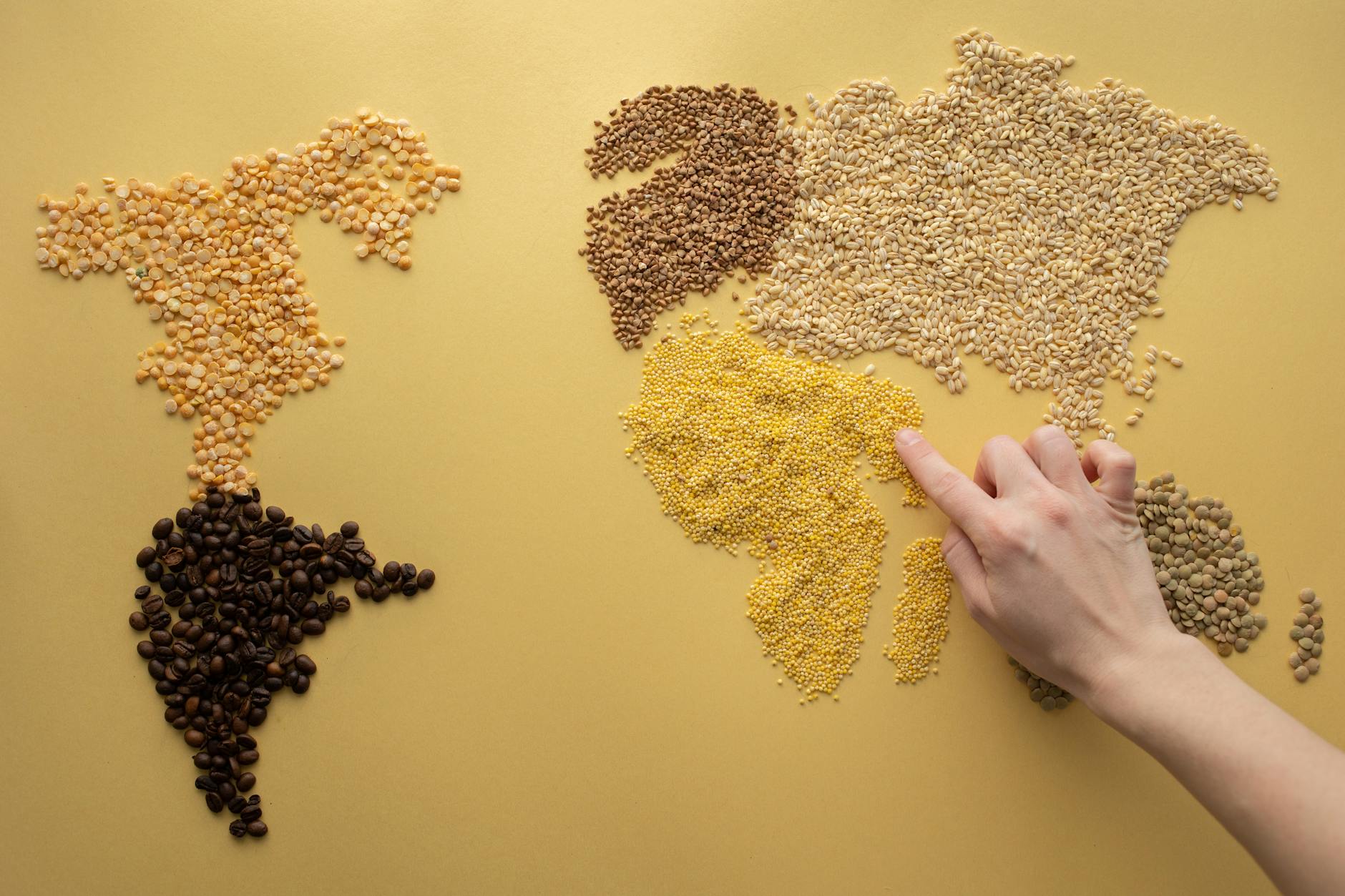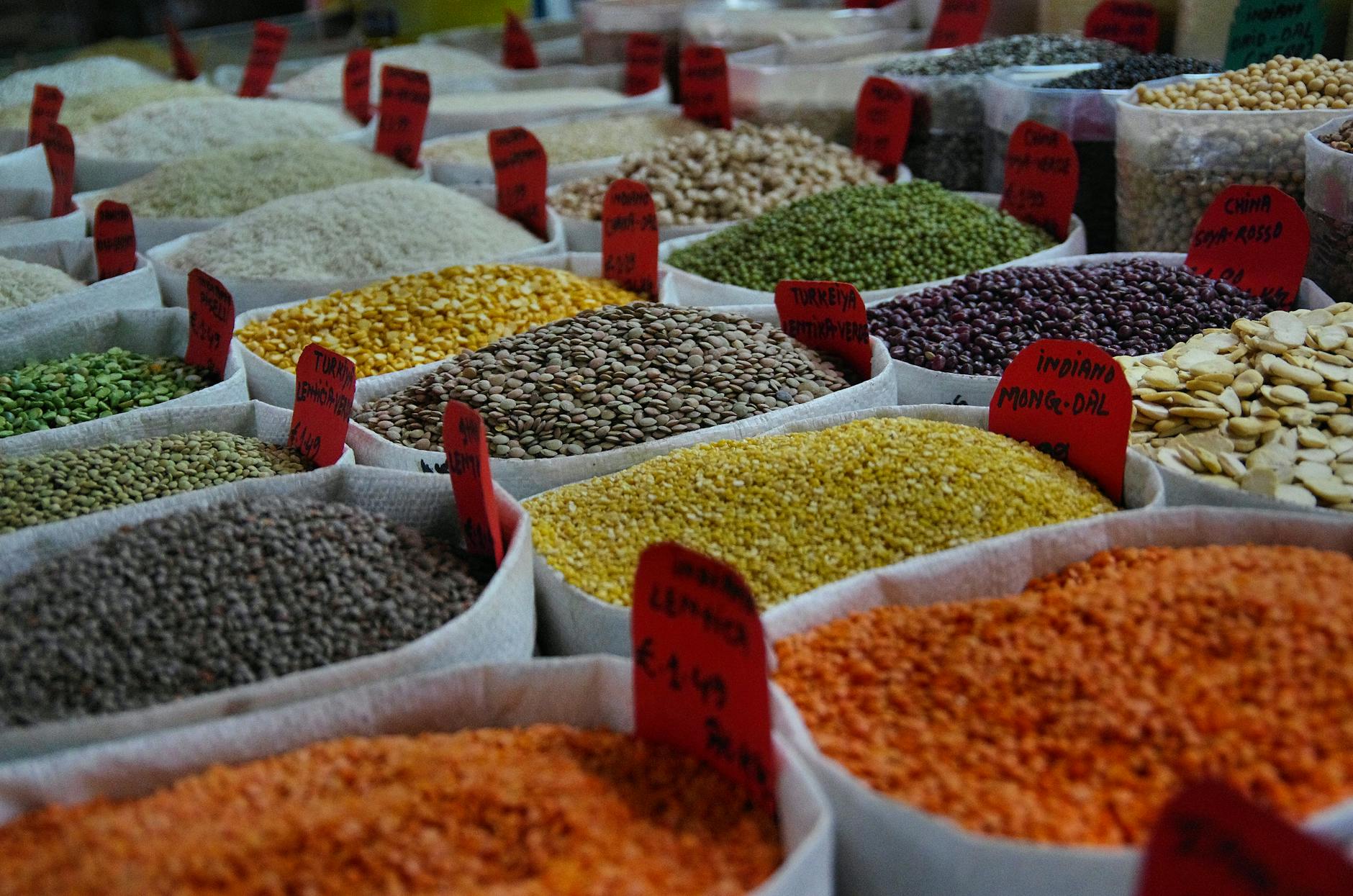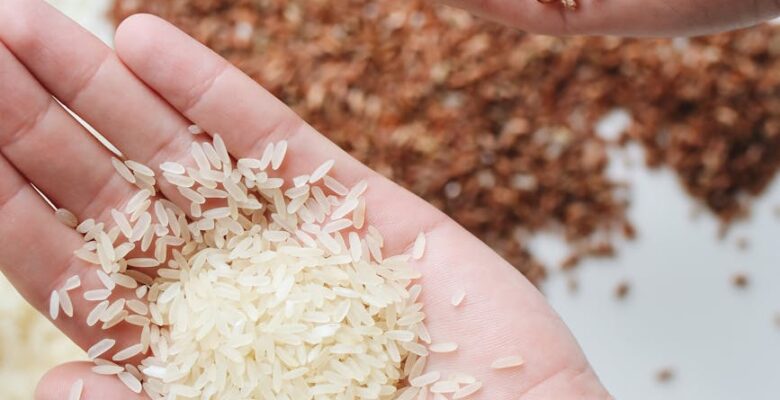So, what are whole healthy grains? “Whole grains contain all three parts of the original seed: bran, germ, and endosperm,” says Marisa Moore, M.B.A., R.D.N., L.D., author of The Plant Love Kitchen. Because these sections of the seed are intact, the grains are high in fiber, vitamins, and minerals, she claims.
“Since most Americans don’t get enough, for many, fiber will be the target for identifying some of the healthiest grains,” Moore states. Not only is fiber an important food for digestion, but a new study found that consuming fiber can improve cognitive function in older persons.
Healthy Whole Grains Come in Many Shapes and Sizes
Grains come in a variety of shapes, sizes, and flavor profiles—some have a slightly crunchy texture with a strong nutty flavor, while others make an excellent mild salad basis.
Wondering where to start your grain journey? “Start with what is available in your area,” advises Moore. “If you have a nearby farmers’ market or health food store, you might be able to find grains such as teff, oats, farro, and barley at more affordable prices than in the supermarket.” Keep a watch out for gluten content. Some grains are gluten-free, whereas others contain gluten, making them unsuitable for people with celiac disease or other intolerances.

Dive into the healthiest whole grains below to learn about their nutritional value, flavor profiles, and some of the best ways to incorporate them into your next meal.
Amaranth
This nutty ancient grain is essentially a seed, similar to quinoa, and is native to South America. It is nutritionally dense, including high levels of iron, bone-building calcium, and fiber, all of which are essential for proper digestion. Research suggests that it may have anti-cancer and antibacterial properties.
To serve, it can be popped in a heavy-bottomed skillet like popcorn, made into porridge, or boiled or steamed like other grains like rice. It retains a small crunch when cooked.
Freekeh
This ancient grain is produced from durum wheat and, when cooked like rice, has a nutty and deep earthy flavor. It is high in protein and fiber, just like other whole grains, but it also contains crucial minerals like manganese, which aids vitamin K in the blood clotting process, and zinc, which is essential for keeping a healthy sense of smell and taste.
Barley
Barley is an ancient cereal grain and the fourth most often produced grain globally. While it is commonly used in beer manufacturing, it is also a beneficial grain to include in your diet since one cup of hulled barley contains more than 6 mg of iron, which is necessary for healthy blood coagulation, as well as a dosage of vitamin B6.
It is an ideal grain to add to salads after boiling since it gives a subtle crunch. Barley also shines when cooked in soup! Pearl barley cooks faster than husked barley, yet both are nutritionally healthy grains.
Black Rice
Black rice, also known as forbidden rice, receives its color from anthocyanins, which have been linked to a lower risk of cancer, cardiovascular disease, and other chronic illnesses.
According to studies, the chemicals found in black rice may help prevent inflammation, which is another cause of chronic disease. It has a chewy and earthy flavor, making it an excellent base for grain bowls.
Buckwheat
This gluten-free whole grain is noted for its beautifully nuanced, nutty, slightly bitter flavor and is the primary ingredient in soba noodles. “Buckwheat is particularly high in antioxidants and fiber and may help support blood sugar management and heart health,” Moore states. According to studies, the flavonoids in buckwheat aid to maintain healthy blood pressure and enhance circulation.
Beyond soba noodles, its flour is frequently used in savory crepe recipes. Try it in this Crispy Seeded Buckwheat flatbread with Smoked Salmon recipe, or toast entire groats and mix them into a bowl of yogurt with berries.
Brown rice
Brown rice is an unprocessed variant of white rice that retains more nutrients than white rice because the bran and hull remain intact. It takes longer to cook than white rice and has a chewier texture.
It also contains more magnesium and vitamin B6, an important mineral that has been shown in studies to improve the immune system and maintain the nervous system healthy.
Millet
There are various varieties of this little spherical gluten-free grain that you might encounter in supermarkets, including fonio, pearl, and finger. One cup of millet also contains 25% of the daily phosphorus requirement for women over the age of 19, which, combined with calcium, contributes to the maintenance of strong bones and teeth.

According to studies, eating millet on a regular basis can help prevent chronic diseases. Dig into a bowl of millet in a wonderful breakfast porridge, which has 11 grams of protein.
Bulgur
Bulgur is a form of cracked wheat that is frequently manufactured from durum wheat (which is not gluten-free). One cup has 17 grams of plant-based protein, as well as more than half of your daily magnesium need, which not only aids in muscle and nerve function but also plays an important part in bone health.
Bulgur comes in a variety of grain sizes, including fine, medium, coarse, and extra coarse, and the finest grains do not require boiling to cook through. Simply add boiling water, let it sit, and then fluff with a fork.
Farro
This crunchy whole grain is offered in several kinds. Brands sell quick cooking or instant farro, which is ready in 10 minutes, although conventional farro might take much longer to prepare.
Farro is especially strong in niacin, a B vitamin that improves skin and aids digestion. “Try batch cooking quinoa or farro to make nutritious grain bowls. Simply add fresh or roasted vegetables, hummus or other spreads, tofu, or other protein of your choice,” Moore advises.
Quinoa
Quinoa is a seed, not a grain, that is native to Peru, Ecuador, and Bolivia. It is gluten-free, making it an excellent base for individuals who avoid gluten due to allergy or intolerance. It is high in essential nutrients—one cup contains 8 gms of protein and 5 gms of dietary fiber.
It maintains a good bite whether steamed, boiled, or cooked into porridge. Or make it into a Frittata with Roasted Red Peppers and Manchego for a delicious brunch!
Whole Oats
This popular breakfast is a mainstay for good reason. “Oats are rich in beta-glucan, a soluble fiber proven to help lower cholesterol levels and improve blood sugar management,” Moore states.
Oats are also strong in fiber, and studies show that fiber, along with other nutrients, assists in enhancing your gut microbiota, which benefits immune system support and digestion.
Sorghum
Sorghum, a popular ingredient in Indian and West African cuisine, is less common in grocery stores. It is an impressive whole grain that has both health and environmental benefits.
Scientists have investigated this crop as one that can thrive in drought circumstances, making it a potentially attractive choice as climate change continues to warm the earth and produce more widespread dryness.
This grain, like other cereals, has a high protein and fiber content. According to studies, sorghum is high in polyphenols, which can help prevent cancer and oxidative stress, both of which may accelerate aging. To prepare, cook like you would quinoa or heat on the burner like popcorn.

Spelt
Spelt, also known as dinkel or hulled wheat, is commonly processed into flour and mixed into bread dough. This nutty grain contains minerals such as potassium, manganese, iron, and phosphorus, as well as thiamin, a vitamin B required for cell function and good metabolism.
Spelled benefits from an overnight soak before cooking to speed up the cooking process or from a slow cooker on low heat to ensure tenderness.
Teff
This little grain can be found whole or crushed into flour, and it is the key ingredient of injera, an Ethiopian staple flatbread. It is a plant native to Eritrea and Ethiopia. “Teff is high in protein, higher in iron than most other grains, and a fiber powerhouse packing 12 grams in just 3.5 ounces!” Moore claims.
This mild, slightly sweet pick contains minerals, including copper, phosphorus, and magnesium, which are essential for proper muscle and neuron function.
To Conclude
Carbohydrates can be a valuable part of one’s diet, but not all carbs are made equal. Simple carbs include processed components such as refined flour and sugars, which might leave you hungry shortly after your meal.
Meanwhile, complex carbs are higher in fiber and other essential nutrients, and they digest more slowly, keeping you satisfied for longer. Healthy grains are a type of complex carb that is beneficial to your health. Whole grains, which include quinoa, barley, black rice, and buckwheat, are delicious at any time of day and have numerous health benefits.
